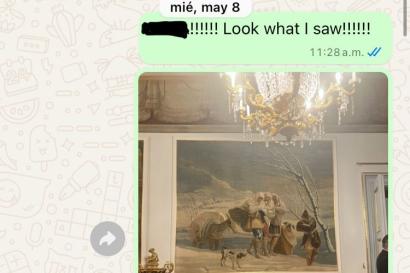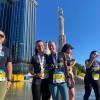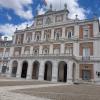Yesterday, I got to experience one of the most exciting days I’ve had in Madrid: the Second of May.
Six months ago, this wouldn’t have meant anything to me. May second in Madrid? It sounded just like every other day.
But in fact, the Second of May – el Dos de Mayo, as the locals say – is a very important date. It is la Dia de la Comunidad de Madrid (more or less “Madrid Day”), and it was chosen because it marks the anniversary of a very important and symbolic historical moment.
On the second of May in 1808, Madrid, like most of Europe, was under Napoleonic rule. Its government had been all but overthrown and many of its royals sent to France. French armies and their mercenaries occupied the city, and on the Second of May they attempted to take the final step of consolidating their rule by bustling the last remaining members of the royal family, including the young heirs to the throne, out of the palace and shipping them to France.
But the people of Madrid, upset by the last symbol of their national sovereignty being taken away, rose up in a spontaneous popular revolution. With pitchforks and scissors, they attacked French soldiers, shouting “Death to the French!” and “Get out!” in defense of their independence as a people. The French sent in their entire army, and the next day thousands of people were executed in mass fusilamientos in retribution for the uprising. (I’ve learned from this semester that it makes brutal sense that Spanish has an entire word for “execution by firing squad” – it happened more than you’d like to imagine.)
It was the first popular (that is, not military) uprising against Napoleon’s rule in the world.
In Madrid, the Second of May is celebrated every year as a symbol of Spain’s independence as a country and as a nation, with its own government and culture. Over the last few days, friends and I have been to public concerts, dances, and plays. And on May 2nd, we witnessed two massive historical reenactments, one in the Plaza del Sol and the other in the plaza outside the Royal Palace, where 116 years ago the people of Madrid stopped the royal children from being taken out of their home.
I’ll be honest: we didn’t do much research before these events. That’s because we didn’t have to. When we saw two actors reenacting the arrest of an innocent young girl by French soldiers because the was carrying scissors in her bag, we turned to each other: “That’s Manuela Malasaña!” When horses thundered by outside the palace, we stood on our tiptoes for a glimpse of the young actors playing the infantes. We recognized the names of landmarks, folk dances, and important historical events in the lyrics of folk songs sung to commemorate the Second of May.
We knew the details well, because we were both in what I consider my favorite and most important class of the semester: a joyful tour de force of history with Professor Carlos Nieto titled “History of Madrid.”
It’s just what it sounds like. We started before the year 0 and studied the Visigoths and Romans. We learned about the conquest by the Arabic empire and the Muslim origins of the cities (and even took a field trip to see the ruins of the 2,000-year-old Muslim wall that still lines a road near the Royal Palace). We learned about the Reconquest, the growth of Madrid as a city, why Felipe II chose it as the capital of his empire, its cultural boom in the centuries that followed, its resistance to Napoleon on the Second of May, its position at the heart of European liberalism, its bloody civil war and Madrid’s role as an international symbol of the struggle against fascism (if you’re ever heard the phrase No Pasarán, you might know it originated in Madrid), and its transition to the seat of a democratic country today.
History of Madrid has been by far the most important class I took at IES, because I see it everywhere I go. More times than I can count, I’ve noticed a subway station and said, “I know who that’s named after!,” because we’ve learned about Bravo Murillo or Antonio Soria or Malasaña (recognize that name?) in class. My morning run takes me past the Canal of Isabel II, the subject of a midterm exam essay question, and every morning I walk past the Arch of the Victory, which we had a heated debate about on the day we studied the end of Franco’s dictatorship.
This semester I also took a Literature of the Spanish Civil War class. While I have a lot of qualms about the course itself, I do appreciate the value of spending concentrated time thinking about the years between 1936 and 1939, and their impact on the rest of Spanish history forever. Like History of Madrid, it’s one of the most important classes I’m in because of its constant effect on the way I think about the place I see and interact with every minute of every day.
In my opinion, these place-based, local classes geared for foreign students are one of the best benefits of IES. They have fundamentally impacted – and improved! – my semester. I understand Madrid in a way I could never understand without the guidance of my professor, and I wouldn’t want to be in Madrid without the level of historical, contextual, and cultural understanding that I have now.
My advice to students picking their classes for next fall (or spring, or summer): take a class just about the city (or country) you’re in. I promise, it will change your entire perspective.

Maple Buescher
Hi!! My name is Maple and I'm a junior at Bates College, where I am a member of the sailing team, the orchestra, and everything in between. I am the Editor in Chief of our student newspaper and am interested in pursuing a journalism career.





